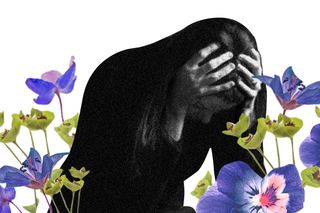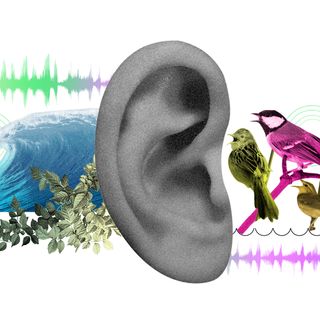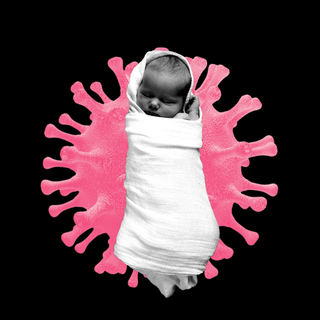
Springtime Can Mean Increased Anxiety, Depression for Some People
Spring blues, a rare type of seasonal affective disorder, results from the pressure to be happy and socially active.

Spring feels like the time for beginnings, energy, and renewal. But for some people, it means the opposite — crippling depression and anxiety during the months of March and April. Research suggests depression and suicide rates peak in late spring and early summer, prompting the question: What is it about spring that leaves mental health in disarray?
Spring months bring increased pressure to engage socially, a set of expectations we’re conditioned to want, do, and experience, and changing weather that can cause poor health, all of which can combine to prompt an annual period of struggle. This can manifest as a mild case of the blues, or as a more serious reverse-form of Seasonal Affective Disorder (SAD), according to psychologists.
SAD isa mood disorder characterized by depressive symptoms at the same time every year, with usually stable mental health throughout the rest of the year. SAD is most common during winter, when people experience a biological slowing down that can cause some to sleep too much, have little-to-no energy, and overeat. In springtime, however, the condition can include heightened anxiety or agitation, or even mania.
Related on The Swaddle:
Seasonal Affective Disorder Works in Reverse in Warmer Climates
The transition from winter to summer can be a mentally draining process, as it demands people recalibrate personal behavior and social engagement levels. While the popular portrayal of winter is dull and dreary, for some people, the season offers comfort and protection from the hustle of the outside world. But as days turn longer, an expectation of being more socially active also rises.
Spring festivals such as Holi prompt family get-togethers, and the warmer weather makes the outdoors more appealing and outings more frequent. For people who prefer staying in, this pressure might bring a wave of social anxiety.
“At the same time as most of us are rolling up our sleeves and spending more time outdoors, others struggle with trying to get into that kind of mode, and counter-intuitively, they feel worse,” Harvard University psychologist John Sharp, Ph.D., told the BBC. “If you’re not being carried along with the natural energy of the season, it can be really hard.”
Spring also ushers in a social obligation to be happy — popular culture and literature have painted this time as one of hope and joy. BTS, the seven-member k-pop band equates spring to hope in their single “Spring Day”; bollywood songs call spring a time of love; Shakespeare, in his “Sonnet 98,” talks about feelings of springtime love and portrays April as the spirit of youth, along with other notable poets in history such as William Wordsworth, P B Shelle and John Milton celebrating spring through their works.
But those who don’t share the same enthusiasm might end up feeling lonelier and further alienated. “This is probably the time of year when you least expect to be feeling down,” Rachel Annunziato, Ph.D., an associate professor of psychology at Fordham University, told Psychology Today. “If you aren’t embracing the season the way others are, you may wonder, ‘What’s wrong with me?’”
This emotional alienation from friends and social circles is compounded by physical distancing from them. The season typically sees people going on vacations and support groups taking a break, intensifying isolation in both literal and emotional senses. This might lead to less structure and a sense of support in people’s lives. “Meanwhile, you’re watching friends enjoy those picture-perfect vacays on Facebook or Instagram,” Dr. Michelle Riba, professor and associate director of the University of Michigan Comprehensive Depression Center, tells Health. “You wish well for everybody, but sometimes you can experience jealousy and envy when you see this.”
Related on The Swaddle:
The Difference Between Feeling Anxious and Having Anxiety
This season, coming as it does on the heels of a new year, can also bring down the full weight of not having met goals set at the beginning of the year. Spring is characterized by achievement; For students, the academic calendar is packed: examinations, assessments, application results, and confirmations can prove to be a dampener. For employed adults, March is usually the month marked for delivering goals for the previous year, causing financial and professional stress. The anxiety around productivity and accomplishments conflates at this time of year to send some people “into a kind of funk,” says Foojan Zeine, Psy.D., MFT, psychotherapist, and author of Life Reset to Psychology Today. “They think, ‘I’m no good,’ ‘I’m a failure,’ ‘I won’t get anywhere.’”
But it’s not just a mental fatigue that sets in. Spring brings physical experiences that are dampened in other seasons; increased pollen transfer during spring trigger allergies, with runny noses, stuffiness, itching, and sneezing at an all-time high. Flu often makes an outbreak. On good days, symptoms of each can seem like a mild inconvenience, but on bad ones, they can make people miserable and sabotage their sleep. Doctors point out that allergens trigger the release of anxiety-producing chemicals. Studies say for people who deal with a pollen allergy once or twice a year, the stress of managing it could add more anxiety than normal to their daily life.
For spring struggles, doctors recommend maintaining a journal to recordmood, changes in appetite, sleep issues,problems with concentration, and physical wellbeing. Springtime blues or reverse SAD could also manifest as physical symptoms like insomnia or headaches. A lot of times people don’t really know what they’re experiencing is depression. They just might not feel well and not understand why, says Dr. Riba.
This March feels heavier than usual, with the first anniversary of the pandemic around the corner. Last year, spring months were marred with the initial panic over the pandemic. A traumatic series of events over the next 12 months prompted a mental health crisis around the world, the effect of which we are still processing — and which could worsen during this season.
The bottom line is to seek help. “People think that something had to have happened to have depression, or that you can will yourself out of it, but that’s not true,” says Dr. Riba. “It’s a biological process—and there shouldn’t be any stigma associated with taking care of yourself.”
Satviki Sanjay is an editorial intern at The Swaddle. She's currently studying philosophy at Miranda House. When not studying, she can be found writing about gender, internet culture, sexuality, technology, and mental health. She loves talking to people, and you can always find her on Instagram @satvikii.
Related


Why Listening to Nature Sounds Has Such a Powerful Effect on Mood
